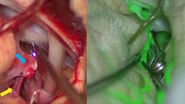Interview Key Highlights
According to Dr. Chatel, the Leica M530 OHX surgical microscope provides numerous benefits for oncological reconstructive surgery and free flap procedures. It is:
- Stable: making it possible to move around freely
- Ergonomic: helping the surgeon feel comfortable during the procedure and saving space in the Operating Room (OR)
- Easy to use: allowing simple set-up, based on pre-configured settings
Dr. Chatel points out that, with the Leica M530 OHX surgical microscope, the surgeon has a wide field of view throughout the procedure. There is no need to move or reposition the camera, even with a large flap. The focus and zoom perfectly meet the needs of flap surgery, providing a sharp and bright image. In addition, the smart illumination features automatically optimize light intensity, while protecting patient skin and tissue.
About Dr. Harold Chatel

Dr. Harold Chatel is a Plastic and Reconstructive Surgeon in Paris, France. The hospital he works for is one of the best in the world for oncology according to the Newsweek ranking of the World’s Best Specialized Hospitals 2021.
Dr. Chatel uses the Leica M530 OHX surgical microscope for oncological reconstructive surgery and other procedures. The microscope allows to have a larger area in full focus thanks to the groundbreaking FusionOptics™ technology, which unites an enhanced depth of field with high resolution.





